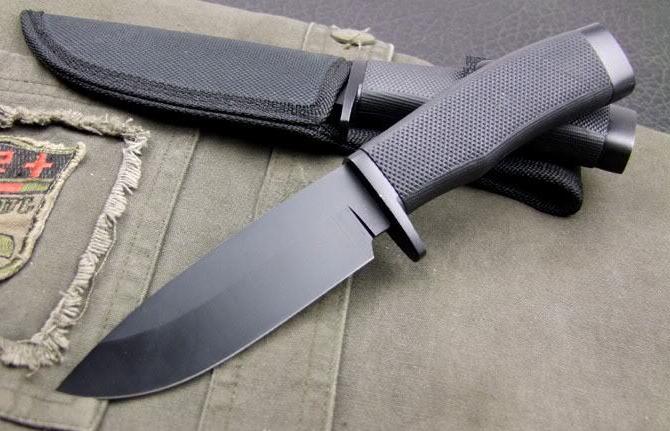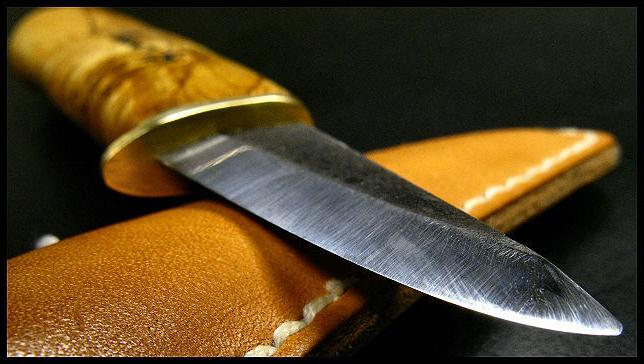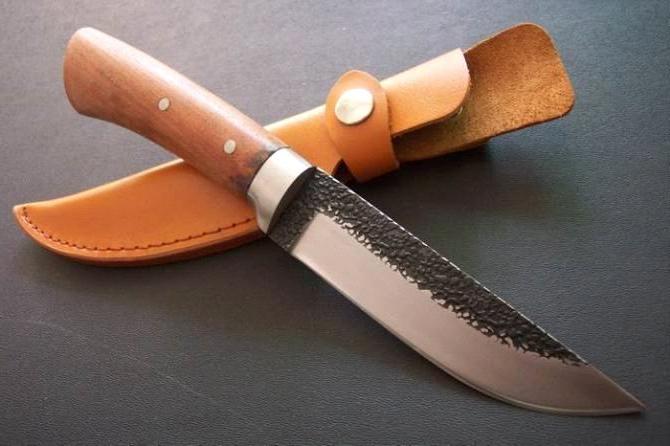What is a hunting knife? Many will find such a question strange, because the answer to it would seem to be obvious. However, it is enough for a novice hunter to seek advice on the Internet, as in his opinion a hunting knife will appear as a kind of super-weapon, which with one stroke cuts off the head of a moose or cuts silk in the air and at the same time can chop a nail into even rings. This, of course, is a joke, but, nevertheless, the advice to buy a knife from damask, damask or other super steel simply hypnotizes an inexperienced person. Therefore, before making a choice of a hunting knife, one must firmly understand that he, in fact, is and for what it is needed.
If the knife is not a decoration and not a valuable gift, but purchased for a real hunt, then this is not a weapon in the narrow sense of the word. This is a tool. And, of course, as a tool, completely different demands are made on it than on weapons. Of course, they can be slaughtered, but you can kill with a sewing machine. When choosing a hunting knife, you should pay attention to its performance characteristics, and not to the "lethal" capabilities and the presence of blood flow.

So, what general requirements should a hunting knife meet. Firstly, the overall size and shape of the knife is chosen according to the hand of the hunter, it should be equally convenient for him with his knife: cut bread, open canned food, cut branches or flush the carcass of the beast. Of course, the concept of “equally convenient” is very conditional and, of course, highly specialized knives will cope with these tasks much better, however, do not carry the “table set” with you. Precisely because the hunter's knife is his only tool, it must be universal and allow everything to be done. Let it not be easy and convenient, the main thing is to make it possible.

Based on the foregoing, it is logical to raise the question of which steel is best for a hunting knife? And here, many fall into error, believing that steels with high hardness are ideal. Yes, such steel holds the sharpener better, but it rusts and, most importantly, no matter how good the blade is, it will still become dull, and it will be very difficult to grind such a knife in the field. In addition, knives with high hardness blades are usually much more expensive than their “soft” counterparts, and this is an important detail for a hunting knife. Agree, opening a tin can or fixing something on a stone with a knife worth $ 300-500 is simply blasphemy. Experience shows that a stainless steel blade with a hardness of 52 to 58 HRC fully meets all the requirements.

Not much less important than the blade are the material and shape of the knife handle. As already mentioned, the hunting knife is a versatile tool, which means that the correct shape of the handle is even, without any recesses under the fingers, always with a guard that protects the hand from falling off the blade and, of course, it should not slip in the palm of your hand (under no circumstances ) Wood can be considered a traditional material, however, modern plastic or rubber-plastic is not inferior to wood, and in terms of cheapness, durability and mechanical strength it is much superior. Of course, the handle of a hunting knife should be solid, without any pencil cases and survival kits.
In the end, I would like to say a few words about the scabbard. Despite the emergence of new excellent materials, many prefer the skin. Based on aesthetics and traditions, it may be correct, but from a practical point of view, it may be better to use sheaths made of synthetic materials. The skin, with all its merits, gets wet and dries for a very long time, which, of course, is not at all good for a knife, but synthetics, on the contrary, do not allow moisture to pass through.
Read more at .